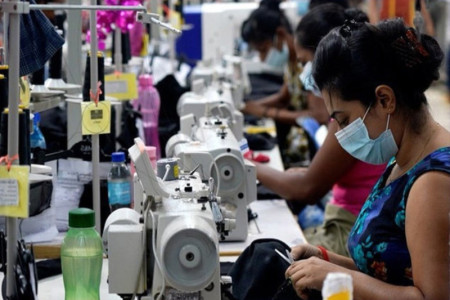Sri Lanka’s apparel industry is experiencing a downturn, with the export performance in the recent months not being at the expected levels.
The Joint Apparel Association Forum (JAAF) said that the current performance is tracking similar to last year, which was US $ 4.5 billion, down some 20 percent from 2022.
“The biggest challenge to our exports is pricing, as Sri Lanka remains uncompetitive in the region,” JAAF Secretary General Yohan Lawrence told Mirror Business.
Pricing remains the most significant hurdle for Sri Lanka’s apparel exports, as the neighbouring countries offer more attractive rates.
He cautioned that any further pressure, including an increase in the wages, could exacerbate the issue, making it even harder for Sri Lanka to compete on the global stage.
Meanwhile, Free Trade Zones and General Services Employees Union Joint Secretary Anton Marcus shared that the garment sector workers are dissatisfied, due to the stagnant basic salaries. Unlike the other sectors, where the wages have increased, the garment workers have not seen similar adjustments, leading to growing frustration among the employees he said.
The most recent wage increase was seen in the plantation sector, where the government approval was given to increase the daily wages by 70 percent.
According to Marcus, the garment sector employees draw a basic salary of Rs.16,000.
In 2022, the National Labour Advisory Council and employers agreed to raise the minimum salary to Rs.21,000. However, despite the eventual Cabinet approval, the payments have not been made, due to a lack of amendments to the current act, he said, noting that as a result, the garment workers’ basic salaries remain at Rs.16,000.
“The garment industry workers are vital to Sri Lanka’s export economy. The recent wage increase for the tea and rubber workers, raising their daily earnings to Rs.1,700, highlights significant wage disparities across the industries regulated by the Wages Board,” he said.
“Employees are requesting overtime payments for garment workers but the employers have halted them, citing a lack of orders. As a result, many garment employees have resigned, unable to sustain themselves on their current salaries,” added Marcus.
Noting that the industry wages are set by the Wages Board for the garment industry and the National Minimum Wage Act, the JAAF pointed out that the Cabinet has already approved a 40 percent increase in the National Minimum Wage Act. Accordingly, companies have done their annual increments for the current year, in line with these regulations.
DM


